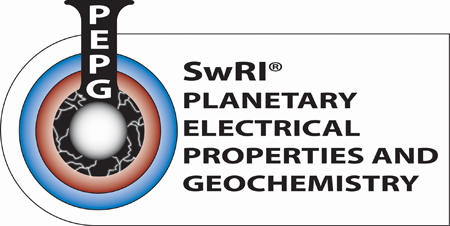
Planetary Electrical Properties and Geochemistry (PEPG) lab

Electrical Property Measurement Overview
First, we take or make a sample and place it in a three-electrode parallel plate capacitor. The guarded and unguarded electrodes create an electric field and the guard electrode nulls out fringing fields.

Figure 1. (left) Antarctic sample between the three-electrode parallel plate capacitor. (right) Example of a liquid or lab-created ice sample. The sample to the left is similar except the insulated wall is removed.
The three-electrode parallel plate capacitor sample holder is placed inside an insulated cooler. The temperature inside this cooler can be held with 0.2oC for hours.

Figure 2. (left) Image of actual sample in the insulated cooler. (right) Diagram of the insulated cooler.
The sample holder is then connected to the 1296 dielectric interface via two coaxial cables, which is then connected to the 1260 impedance analyzer. The 1296, 1260 and 331 temperature controller are all connected to the computer to save and control the instruments.

Figure 3. (left) Image of measuring instruments and freezer. (right) Diagram of apparatus.
To make an electrical property measurement. The 1260 and 1296 inputs current at a single frequency and measures the amplitude and phase of the result voltage. For a perfect/lossless capacitor the phase difference between the current and voltage will be 90o out-of-phase, while for a perfect resistor the current and voltage will be in-phase. Once a measurement is made at a single frequency, the frequency is decreased and the process starts again. We typically make sweep over a very broad frequency range of 1 mHz to 10 MHz.
Once a full frequency sweep has been made, we then vary the temperature. Typically, we start at the lowest temperature and then increase to avoid supercooling issues. Our typical temperature range is -92 to 25oC, but we have gone down at low at -160oC and up to 120oC. We vary the temperature, because the electrical properties of nearly all materials are not only frequency dependent, but also temperature dependent.
By studying the frequency- and temperature-dependence we have shown that we can determine the amount of Cl in the ice lattice, the eutectic temperature of a salt, the presence of adsorbed water on soils with large surface areas, the volume of ice in the subsurface, and the reason why radar is attenuated on Mars.